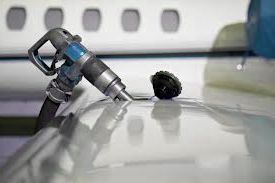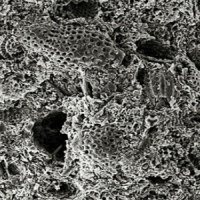Clays, Sorbents Menerals
Activated Charcoal &
Process Water Clarifier
Activated Alumina
Molecular Sieve
Selexsorb Acid
Pleated Paper
Water Removal
Semi-Conductor
Filtration
FULLER’S EARTH FOR FUEL TREATMENT
 The problems that are attributed to surfactants are principally related to their tendency to prevent the filter/separator elements from performing their functions, i.e., removing dirt and water from fuel. Water and dirt in an aircraft fuel system have well recognized dangers, but the secondary effects are of equal importance. Bacteria can grow in the aircraft fuel system if water is present and the result can be corrosion of structural members and errors in the signals from fuel gauging probes.
The problems that are attributed to surfactants are principally related to their tendency to prevent the filter/separator elements from performing their functions, i.e., removing dirt and water from fuel. Water and dirt in an aircraft fuel system have well recognized dangers, but the secondary effects are of equal importance. Bacteria can grow in the aircraft fuel system if water is present and the result can be corrosion of structural members and errors in the signals from fuel gauging probes.
High Performance Adsorbent Media For Jet Fuel Clarification
Our Fuller's Earth for fuel treatment is a high-performance adsorbent media that removes polar compounds in jet fuel to assure it meets product specifications such as thermal stability, microseparometer, and water reaction. Our Fuller's Earth granules have a large, highly active surface area that adsorbs oil soluble surfactants, organometallic compounds such as copper-complexes, and particulate matter that would jeopardize jet fuel specifications.
Our Fuller's Earth for fuel treatment is a unique, naturally occurring attapulgite that has been thermally processed to provide hard, durable granules that won’t swell or break down in the presence of water. The have approximately 150 m²/g of active surface area that provides long bed life and efficiently removes jet fuel contaminants.
Surfactant contamination in fuels has been attributed to the following sources:
- Refinery- Naphthentic and sulfuric acids; also naphthenates and sulfates formed during acid and caustic treatment.
- Pipelines and transport trucks- Residuals from multi-product pipelines (corrosion inhibitors, gasoline additives and heating oil) are adsorbed on pipe walls-then dissorbed into aviation fuel.
- Ships and barges- Same method as above (2). Also seawater and acids in the fuel can combine to form sodium naphthenates and sulfates.
- Maintenance materials- Soaps, detergents and other cleaning residuals. Rust preventatives and descaling chemicals are usually surfactants or combine to form surfactants.
Treatment of fuel to remove surfactants is usually done with attapulgus clay. In the refinery, large towers are built to contain many tons of bulk clay in percolation column. However; complications of handling bulk clay outside a refinery have led the industry to use the element type clay vessels to treat fuel in field installations.
The key to good results in clay treatment is to keep the fuel in contact with the clay for as long a time as possible. This is called residence time. If you look at a clay particle, you will see what seems to be a grain of fine (60 to 90 mesh) sand.  However, if you look within the grain with a microscope, you will find it is made up of smaller particles that cling together to form a porous mass. If the smaller particles are examined with an electron microscope, they reveal that they contain thousands of needle like attapulgite crystals. Scientists have calculated that one pound of attapulgite has about 13 acres of surface area.
However, if you look within the grain with a microscope, you will find it is made up of smaller particles that cling together to form a porous mass. If the smaller particles are examined with an electron microscope, they reveal that they contain thousands of needle like attapulgite crystals. Scientists have calculated that one pound of attapulgite has about 13 acres of surface area.
It is clear that residence time is required in order for the fuel to have enough time to penetrate the clay particle where the surfactant can be adsorbed onto the surfaces of the crystals. Extremely small dirt particles in the submicronic range are also adsorbed. This is why the oil industry and manufacturers keep the flow rate over the standard element very low - from 5 to 6 GPM, but never higher that 7 GPM. This flow is based on a standardized 7"OD X 18"L filter element.
Referring again to the construction of the clay particle, we mentioned that individual grains are made up of many very small particles that cling together. The grains do not breakdown under normal circumstances; however, water can cause this to happen. To deter this breakdown in the presence of water, Jaxon Filtration uses a twice oven treated clay known as Low Volatile Material (LVM).
When using Jaxon Filtration Fuller's earth elements, improvement in the operation life of the coalescer is dramatic. In some cases coalescer element life was prolonged by several million gallons. Improvement in color ratings has proven just as dramatic.
RECOMMENDED FLOW RATES FOR SELECTED FLUIDS
LIQUID |
RECOMMENDED MINIMUM OPERATING TEMPERATURE |
MAXIMUM FLOW RATE |
||
˚F |
˚C |
USGPM |
LPM |
|
| INSULATING OIL | 140 |
60 |
1-2 |
4-8 |
| HYDRAULIC OIL | 150 |
66 |
1-2 |
4-8 |
| SEAL OIL | 150 |
66 |
1-2 |
4-8 |
| LUBRICATING OIL | 160 |
71 |
1 |
4 |
| QUENCH OIL | 150 |
66 |
.5-1 |
2-4 |
| GASOLINE | 40 |
4.4 |
8-9 |
30-34 |
| KEROSENE | 50 |
10 |
6-7 |
23-27 |
| JET A – JET A1 | 40 |
4.4 |
6-7 |
23-27 |
| DIESEL | 60 |
15.6 |
4-5 |
15-19 |
Clarification Media
Address: 6428 Hwy 219 Franklin, Ga. 30217, Phone:706-675-3996 Toll Free: 888-780-3568 email: scotty@jaxonfiltration.com
Filter Media | Filter Elements | Filter Equipment | Contact Us| About Us | Home
© Copyright Jaxon Filtration. All rights reserved.

